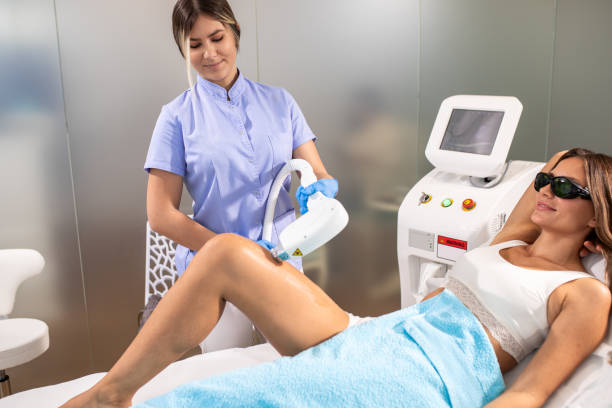The idea that the light energy generated by lasers could reduce inflammation and pain, accelerate the healing of damaged tissues, relax muscles, and encourage the regeneration of nerves seems a bit fanciful. However, science informs us that these effects are real. However, how much do they occur, and does it depend on power and wavelength?
“Wavelength and the power of the laser determines capability of the laser to penetrate the body. When you’re in the infrared spectrum, and at a wavelength of 800 nanometers or more laser energy can penetrate like X-rays. However, for the laser to penetrate deep, it requires massive power or energy,” declares Bruce Coren, D.V.M., the chief executive officer and founder of Technological Medical Advancements LLC, which produces therapeutic lasers.
“A 10-minute treatment with a 30-watt laser will produce 18,000 joules, which gives a significant pain relieving, anti-inflammatory and healing effect.”
Two Types or Classes Used in Physical Therapy
Two kinds of lasers are utilized in physical therapy. Class 3 and 4.
“Class 3 lasers are less than 500 milliwatts (mw) in power while class 4 lasers are greater than 500 mw,” Coren declares. Class 3 lasers are often called cold lasers. The therapy could be called LLLT or low-level laser therapy. Contrarily the laser therapy in class 4 is often referred to as HPLT to the high power laser therapy.
“The majority of neuro-musculoskeletal conditions respond better to a higher power and a higher dosage, which is a function of power output and time,” Coren says. “The most effective results are likely to be attainable using a laser with 30 watts or greater. A treatment lasting 10 minutes using a laser with 30 watts produces 18,000 joules which has a significant pain relief healing, anti-inflammatory and pain relieving effect.”
Patients generally feel better after a couple of treatments, but several treatments could be required to fix the issue.
“The more chronic and extensive the injury, the more treatments are usually needed,” the doctor says.
Properties of High-Power Laser Therapy
Coren mentions that the beneficial effects of laser therapy are:
Pain relief: “Laser lowers nerve sensitivities through diminuting bradykinin an eliciting chemical for pain. It normalizes ion channel [cellular gatekeepersand releases endorphins, the body’s natural pain reliever] as well as the enkephalins (which are related to endorphins) which create an analgesic effects. Additionally, it has a pain-blocking action on certain neural fibers.”
Anti-inflammatory/Healing: “Laser increases ATP, which is stored energy [ATP is the acronym for adenosine triphosphate]. The increased energy speeds up the process of repair of cells. Lasers also cause a widening of the veins and arteries around the site of injury. This assists in the removal of damaged cells and increase the amount of oxygen and nutrients. The activity of white blood cells increases, resulting in faster repair. Additionally, certain molecules that cause the inflammation are decreased, and beneficial antioxidants like superoxide dimutase are increased.”
Accelerated Tissue repair and cell growth: “Photons of laser light penetrate deep into tissues and boost the process of cellular growth and reproduction. In response to light from lasers, the cells of ligaments, tendons and muscles, as well as nerves and muscles, are repaired faster.”
Enhanced Vascular Activity: “Laser light increases the formation of new capillaries in damaged tissue, which speeds up the healing process, and closes wounds quickly.”
Acupuncture and Trigger Points: “Laser is particularly efficient in removing the pain of trigger point. It also provides a powerful method of stimulating Acupuncture points, without the discomfort that comes with needles.”
Reducing Fibrous Tissue Formation” Laser therapy helps reduce the growth of scar tissue after tissue damage caused by repeated traumas, cuts, burns, scratches or even surgery.”
Speedier Wound Healing: “Laser light increases the protein building blocks in collagen which are essential in wound healing and repair of tissues that have been damaged. Collagen is the protein needed to replace damaged tissue and to heal wounds. Therefore, the laser works well on burns and open wounds.”
Stem Cell activation L “increases the number of stem cells, which enhances healing.”
Where Laser Therapy Is Administered and Conditions Treated
High-power lasers are usually used at physical therapy centers and chiropractic offices. The back, neck, or joint pain generally responds rapidly to laser therapy.
LLLT promises “for inflammatory conditions, including peripheral neuropathy, tendonitis, bursitis, and capsulitis,” Coren states. “Strains, sprains, and repetitive motion injuries all have an inflammatory component and can be successfully treated with laser. There is no particular condition that responds more quickly to laser. However, some patients will respond faster than others for the same condition as individual healing rates can vary.”
Laser therapy is an excellent option in conjunction with other treatments or conjunction with rehabilitative exercise therapy.




